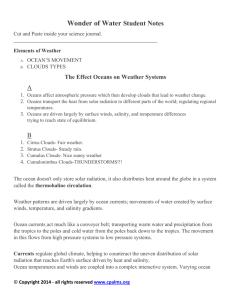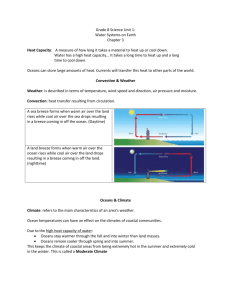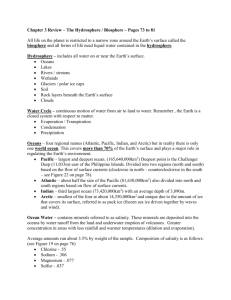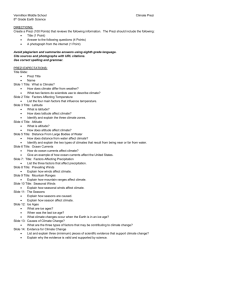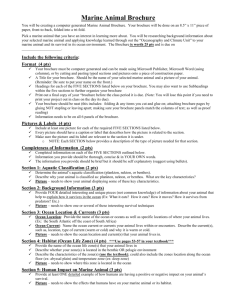Climate - STEMTeachersNowPDProject
advertisement
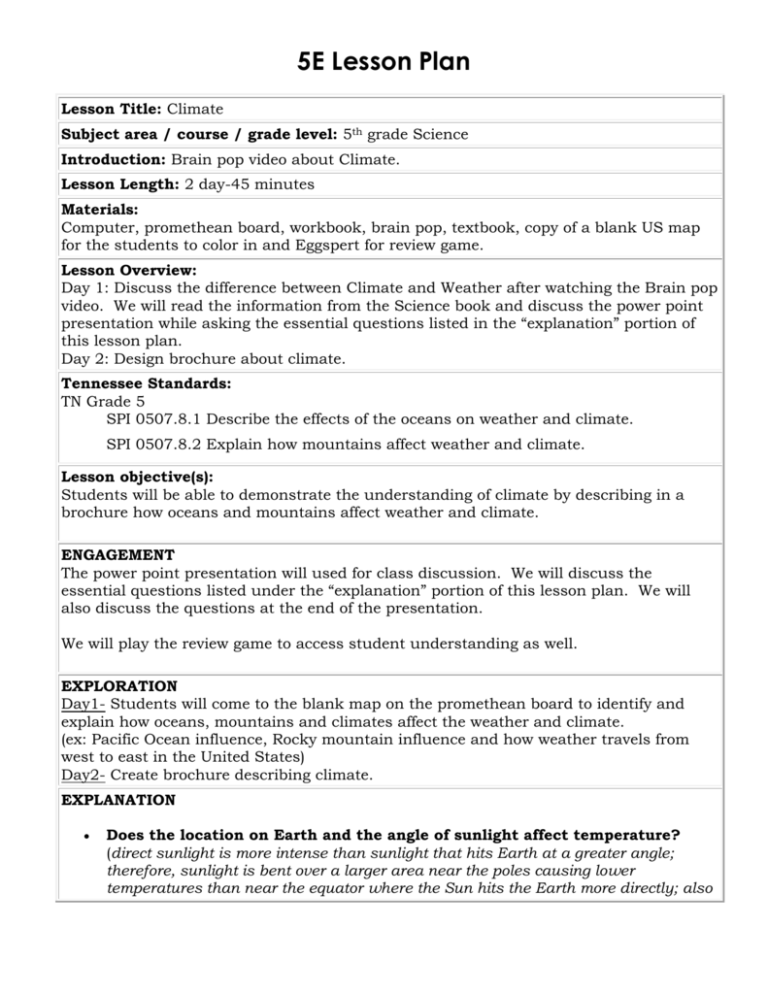
5E Lesson Plan Lesson Title: Climate Subject area / course / grade level: 5th grade Science Introduction: Brain pop video about Climate. Lesson Length: 2 day-45 minutes Materials: Computer, promethean board, workbook, brain pop, textbook, copy of a blank US map for the students to color in and Eggspert for review game. Lesson Overview: Day 1: Discuss the difference between Climate and Weather after watching the Brain pop video. We will read the information from the Science book and discuss the power point presentation while asking the essential questions listed in the “explanation” portion of this lesson plan. Day 2: Design brochure about climate. Tennessee Standards: TN Grade 5 SPI 0507.8.1 Describe the effects of the oceans on weather and climate. SPI 0507.8.2 Explain how mountains affect weather and climate. Lesson objective(s): Students will be able to demonstrate the understanding of climate by describing in a brochure how oceans and mountains affect weather and climate. ENGAGEMENT The power point presentation will used for class discussion. We will discuss the essential questions listed under the “explanation” portion of this lesson plan. We will also discuss the questions at the end of the presentation. We will play the review game to access student understanding as well. EXPLORATION Day1- Students will come to the blank map on the promethean board to identify and explain how oceans, mountains and climates affect the weather and climate. (ex: Pacific Ocean influence, Rocky mountain influence and how weather travels from west to east in the United States) Day2- Create brochure describing climate. EXPLANATION Does the location on Earth and the angle of sunlight affect temperature? (direct sunlight is more intense than sunlight that hits Earth at a greater angle; therefore, sunlight is bent over a larger area near the poles causing lower temperatures than near the equator where the Sun hits the Earth more directly; also regions far from the ocean experience greater extremes of hot and cold weather, and may also be drier.) How does temperature affect climate? (temperature affects the amount of evaporation, transpiration, and precipitation that occurs) How does a water body affect the climate of an area?(water requires more energy to raise its temperature and takes longer than land to cool off once the temperature is raised, affecting the direction of the winds and the temperature of the air close to water bodies) How does an area’s latitude affect the climate? (areas closer to the equator receive more of the direct rays of the sun than areas closer to the poles, creating large global temperature differences) How does an area’s altitude affect the climate? (pressure and density of air molecules decrease as altitude increases; the temperature of the air becomes cooler as this occurs) How do ocean currents affect climate? (Ocean currents are either warm or cold. Warm water currents also warm the air, creating a warmer, moist climate. Cool air does not hold as much water, resulting in cooler and drier climates.) How do global winds affect climate? (global winds move weather from one area to another and are created by the uneven heating of the Earth’s surface) Which climate zones are most affected by water bodies? By latitude? By landforms? By altitude? Higher level student questions: Explain how the interaction of the hydrosphere, lithosphere, and atmosphere all affect the climate of an area. (Have students synthesize information from each sphere to determine how each contributes to the climate of an area.) How does the size and shape of land (topography) affect climate? (the temperature of air located in low and high altitudes and the direction and speed of winds created by temperature differences and land barriers are examples of how climate is affected by the land’s shape; air masses that develop or are located at the center of a large land mass will have different characteristics than air masses close to water bodies ) ELABORATION Vocabulary Words- climate, El Nino, ocean currents, land breeze, sea breeze, and mountain effect. We will discuss current weather events and how climate affects EVALUATION The students will design a climate brochure: 1. Front page- a brief statement will describe the contents of the brochure. 2. Inside left side- uneven heating- describe in further detail with pictures. 3. Inside right side-three major climate zones-describe in further detail with pictures. 4. Back page-sea breeze, land breeze and mountain effect-describe in further detail with pictures.



